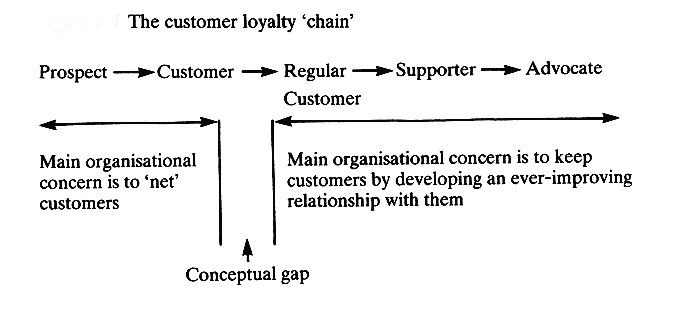There is an enormous emphasis in business literature on the provision of service as being key to the success of a business. They suggest that success is a "product of being market (i.e. customer) driven rather than marketing driven" (Webster 1994).
The Profit Impact of Market Strategy database (PIMS) shows that companies in the top third of perceived quality have prices 5-6% higher relative to competition than the bottom third:- Customers are willing to pay for quality. The PIMS database also shows that companies that are considered by their customer to offer superior service also have a substantially higher return on investment (30% against 15%):- It's clear that
Superior service leads to improved profitability.
There are a number of reasons for this:
- Improved service quality leads to greater efficiency. Audits by Technical Assistance Research Programs Inc (TARP) suggest that poor service and ineffective customer communication cause up to one third the total workload (Zeithaml 1990):- Improved service reduces workload
- Service quality results in lower costs of sales: Research shows that 97% of customers who have had a bad experience don’t complain, but that 91% of those that don’t complain don’t come back (Peters 1981) – poor service results in high customer turnover. Gaining a customer costs five times as keeping an existing one (TARP). Thus higher service levels lead to reduced turnover and reduced costs.
- Lower advertising costs. Customers will tell their friends about good experiences.
- Service quality will differentiate a business from its competitors. "Competitors commonly offer the same services and different service" (Zeithaml 1990). Because service offerings are easy to copy it is important to seek methods of differentiation. Service quality provides a significant barrier to entry for potential competitors.
- Dealing with complaints effectively can
actually enhance loyalty Research by
TARP shows that "A well handled problem
usually breeds more loyalty than you had before
the negative incident." Quoted by Tom
Peters (1981).
While good Customer Service is not necessarily "getting it right first time" a badly handled problem can lead to less loyalty than if it were not handled at all. (Nicolson Kemp and Linell 1995)
In summary:
Perception of quality leads to customer loyalty and results in a sustainable competitive advantage.
This drive towards generating loyalty through customer service can be contrasted with the traditional sales focused approach which concentrates resources on turning prospects into customers. Figure 3.1 shows the conceptual gap that companies need to overcome between the easily understood drive for customer volumes against the possibly less intuitive, but stronger, benefits for customer relationships.
